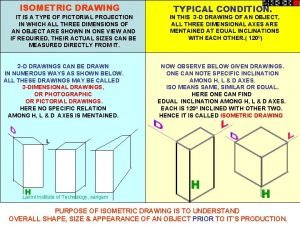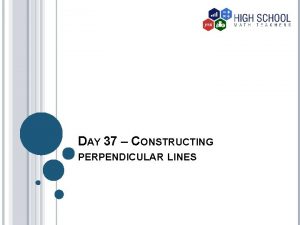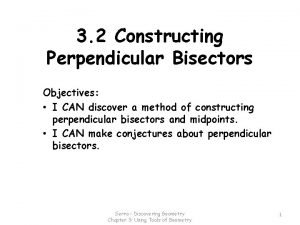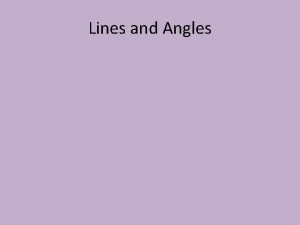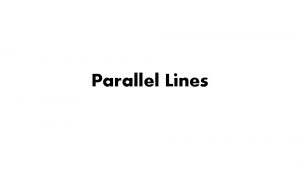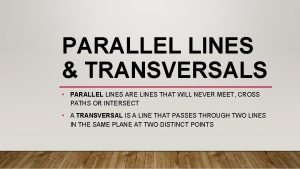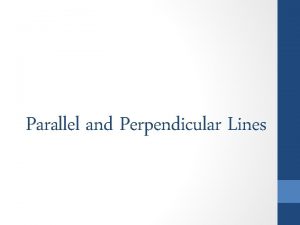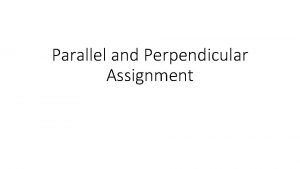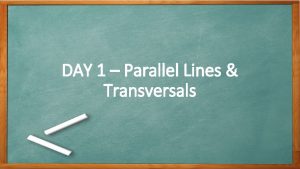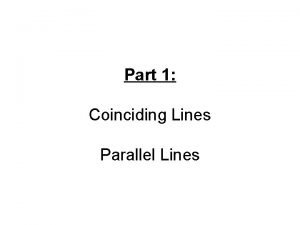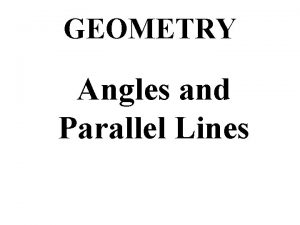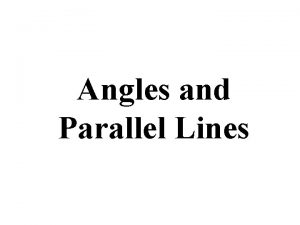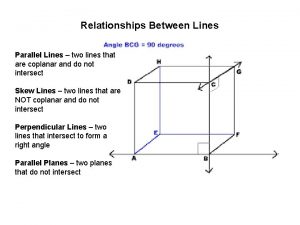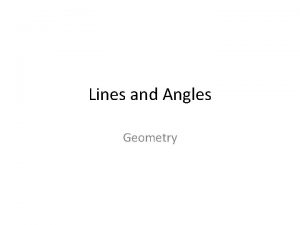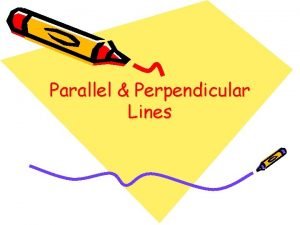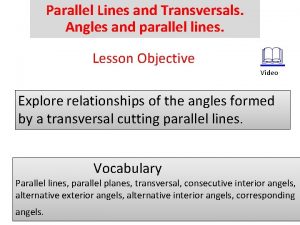DAY 38 CONSTRUCTING PARALLEL LINES INTRODUCTION Parallel lines


















- Slides: 18

DAY 38– CONSTRUCTING PARALLEL LINES

INTRODUCTION Parallel lines refer to lines in a plane that do not meet or have a constant distance between them along their length. We encounter parallel lines in most cases such as opposite edges of most table tops, pairs of lines at the intersection of most walls, sides of a door among others. In this lesson, I would like to learn how we can construct such lines.

VOCABULARY Parallel Lines in a plane that are separated by the path of constant width along their lengths.

Construction To construct parallel lines, there are 3 main methods that are used. These are; i). The use of a set square ii). The use of angle transfer method iii). The use of parallelogram method The second one is the most common used method of construction. Use of set square One shorter side of the set square aligned to the line while the other shorter side on a straight edge or a ruler. The set square is then slid along the

The straight edge till the other shorter side reaches the point, T, where the line has to pass. A line is then drawn guided by the shorter side of the set square. The result is a pair of parallel lines. V U T

Use of angle transfer method We would like to draw a line passing through B and parallel to AC. C A B We draw a line from A to B. Using a smaller but suitable radius on the compasses, we place the tip of the compass at A then make an arc to intersect both AC and AB.

C A B Without adjusting the compass, place the tip of the compass at B and make an arc in the similar direction as the first one.

C A B We then place the tip of the compass at the intersection of the first arc on line AB then make it intersect the intersection of arch and line AC. C A B

Using the same radius, we make a similar arc above B with the intersection of line AB and the second arch as the center (location of the tip) C A B

We then connect B to the intersection of the two arcs and we have a line parallel to AC. C A B

The use of parallelogram method We would like to draw a line at C parallel to line PC V P C To do so, we put the tip of the compass at P then draw an arc to pass through V.

V P C Without adjusting the radius of the arc, we make the same arc at C as shown above

V P C We the put the tip of the compass at P and make an arc to go through C as shown above.

V P C We the put the tip of the compass at V and make an arc to go through the arc above C as shown above.

V P C We then connect the intersection point to C to have the parallel line. Connecting the same point to V makes a line parallel to PC.

HOMEWORK Draw a line parallel to VW at C V C W

ANSWERS TO HOMEWORK We use a set square method V C W

Draw a line parallel to VW at C V C W
 Day 1 day 2 day 3 day 4
Day 1 day 2 day 3 day 4 How to make parallel lines with a compass
How to make parallel lines with a compass Day 1 day 2 day 817
Day 1 day 2 day 817 Square pyramid isometric view
Square pyramid isometric view How to construct a parallel line
How to construct a parallel line Construct perpendicular lines
Construct perpendicular lines How to construct perpendicular bisector
How to construct perpendicular bisector Are tiny elevation or hill like structures.
Are tiny elevation or hill like structures. Parallel lines def
Parallel lines def Schoolmax gradebook
Schoolmax gradebook Oceans apart day after
Oceans apart day after Day to day maintenance
Day to day maintenance Physical science chapter 6 review answers
Physical science chapter 6 review answers Tomorrow i dont know
Tomorrow i dont know L
L Growing day by day
Growing day by day Seed germination inhibitors examples
Seed germination inhibitors examples Conclusion of seeds
Conclusion of seeds Role of transpiration
Role of transpiration



